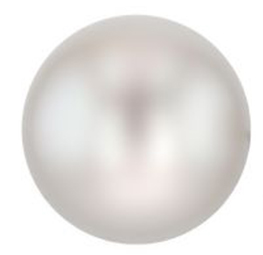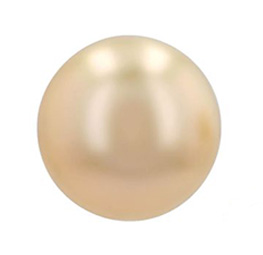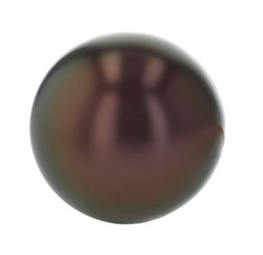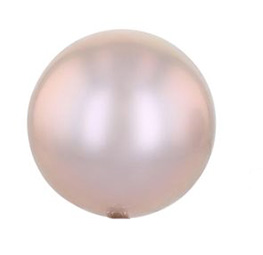Not all pearls are created equal. Here’s what to know before purchasing pearl jewelry.
Natural Pearls
Natural pearls are the most traditional and rarest type of pearl. They form when an irritant enters the soft tissue of a mollusk, triggering it to secrete layers of nacre to protect itself. Over time, these layers build up, forming a pearl. Natural pearls often have irregular shapes, although round ones can occasionally be found. Their colors range from white and cream to shades of pink, gray and even black. Due to their rarity, natural pearls are the most expensive type of pearl and highly sought after by collectors.
Historically, natural pearls were discovered in the Persian Gulf, the Red Sea and the Indian Ocean. Today, they are virtually extinct in commercial quantities, though a few may still be found by divers in specific regions.
Most, if not all, of the pearls you’ll find today are cultured. These are genuine pearls, cultivated through a controlled operation that mimics natural pearl creation.
Cultured Pearls
Cultured pearls form through the same process as natural pearls, but with human intervention to facilitate it. Cultured pearls are deliberately created by inserting a tiny bead or piece of tissue into the mollusk, stimulating it to form a pearl. The process is controlled to ensure the formation of high-quality pearls. Read more about this June Birthstone here. The main categories of cultured pearls are Akoya, South Sea, Tahitian and freshwater.
Akoya Pearls
Akoya pearls are the classic choice among cultured pearls. Primarily grown in Japan and China in saltwater Akoya oysters, these pearls are coveted for their round shape, making them the preferred selection for fine jewelry. They come in sizes ranging from 2mm to 10mm, though the larger ones are pretty rare. While white and cream are the most common colors, Akoya pearls can also display subtle overtones of pink or silver. What truly distinguishes Akoya pearls is their exceptional, mirror-like luster. The price of an Akoya pearl necklace can range from around $300 to $3,000 or more for a high-quality strand. Learn more about pearl grading here.

South Sea Pearls
South Sea pearls are cultivated in the warm, rich waters of the South Pacific, almost exclusively in Australia, Indonesia and the Philippines. These pearls are some of the largest cultured pearls, measuring between 9mm and 20mm, making them both larger and rarer than Akoya pearls. South Sea pearls exist in multiple colors, including white, silver and gold, with the golden variety being especially admired. While round South Sea pearls are most valued, they can also occur in baroque (irregular) shapes. The luster of South Sea pearls is softer than that of Akoya pearls, but it is still highly desirable. A premium strand of South Sea pearls can cost anywhere from $1,000 to upwards of $100,000 for a luxury pearl necklace.

Tahitian Pearls
Tahitian pearls are often referred to as “black pearls,” but they actually offer a spectrum of colors. These pearls are farmed in black-lipped oysters in the warm waters of French Polynesia, particularly around Tahiti. Tahitian pearls are renowned for their dark, iridescent tones, which vary from deep charcoal and jet black to shades of green, purple, blue and even aubergine. Though round Tahitian pearls are possible, they are more commonly seen in unique shapes like drop, baroque or circled, with sizes starting at 8mm and reaching up to 18mm across. Tahitian pearls have a high luster and a distinctive metallic sheen, which sets them apart from other types. Tahitian pearl necklaces are valued anywhere between $500 and $10,000 or more, depending on size, shape, color and luster.

Freshwater Pearls
Freshwater pearls, as their name suggests, are formed in freshwater lakes, rivers and ponds. The majority of freshwater pearls come from China, but they are also sourced in the United States (particularly in the Mississippi River) and other parts of the world. Unlike saltwater pearls, freshwater pearls don’t require the implantation of a bead; instead, a small piece of tissue is used to nucleate the mollusk. These pearls feature an assortment of colors, including white, pink, lavender, peach and purple, with a color variety that often surpasses that of saltwater pearls. Typically irregular, freshwater pearls take on different forms, such as oval, button and baroque. They can be as petite as 2mm and as large as 15mm in diameter, with most being smaller than their saltwater counterparts. While freshwater pearls tend to have a slightly softer luster than saltwater pearls, they still possess a beautiful glow. Freshwater pearl necklaces are sold for as low as $50 to as high as $3,000, though most fall within the lower end of this spectrum.

Shop Borsheims.com for your finest selection of pearl jewelry.

